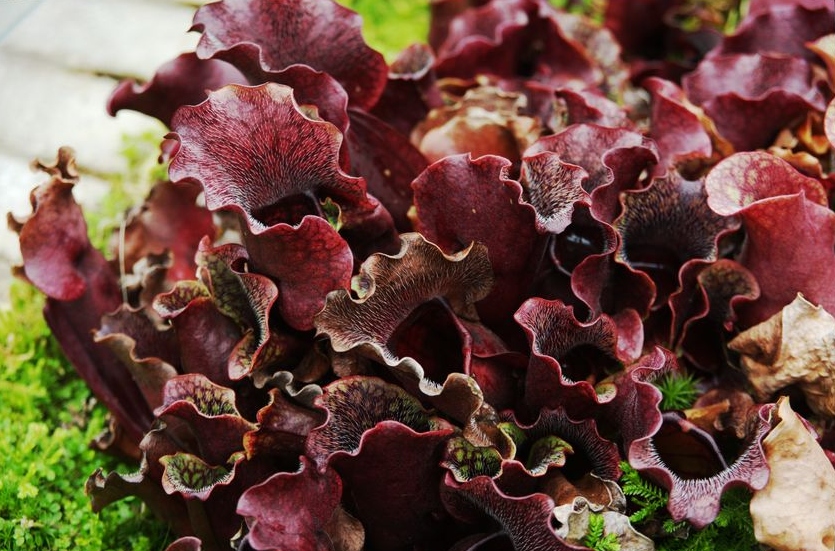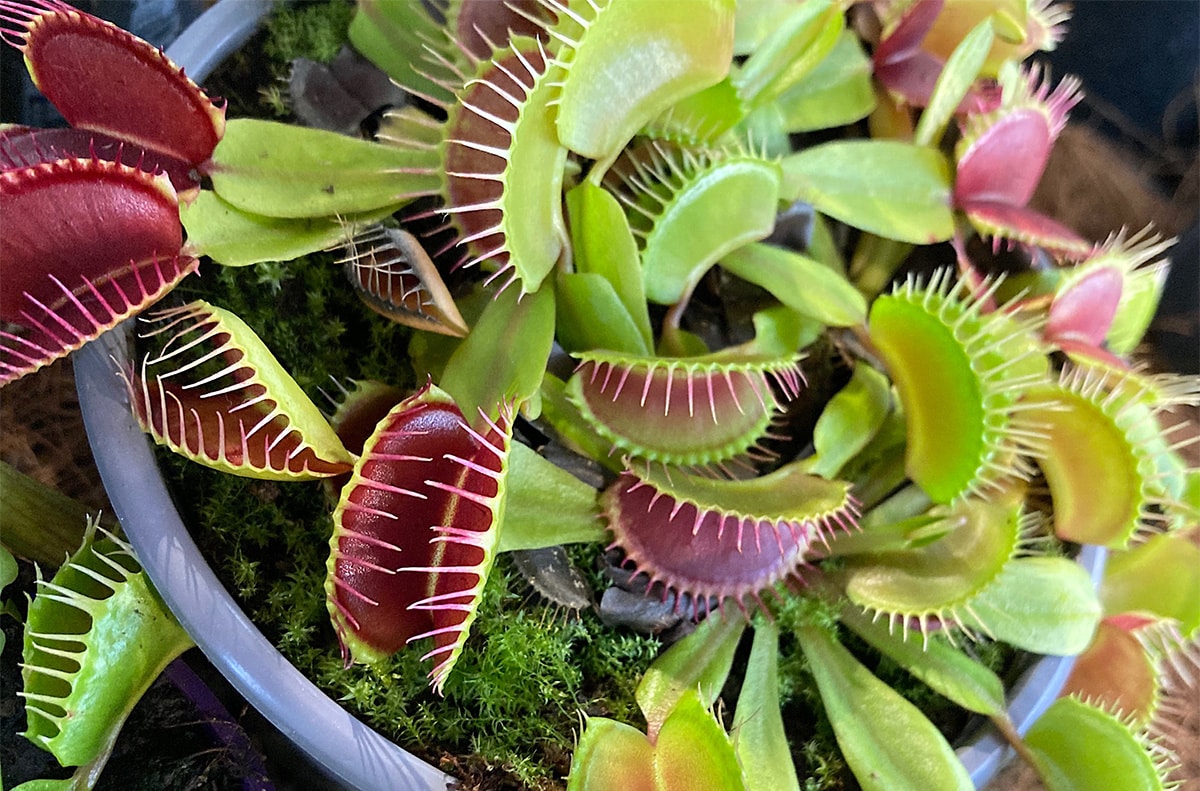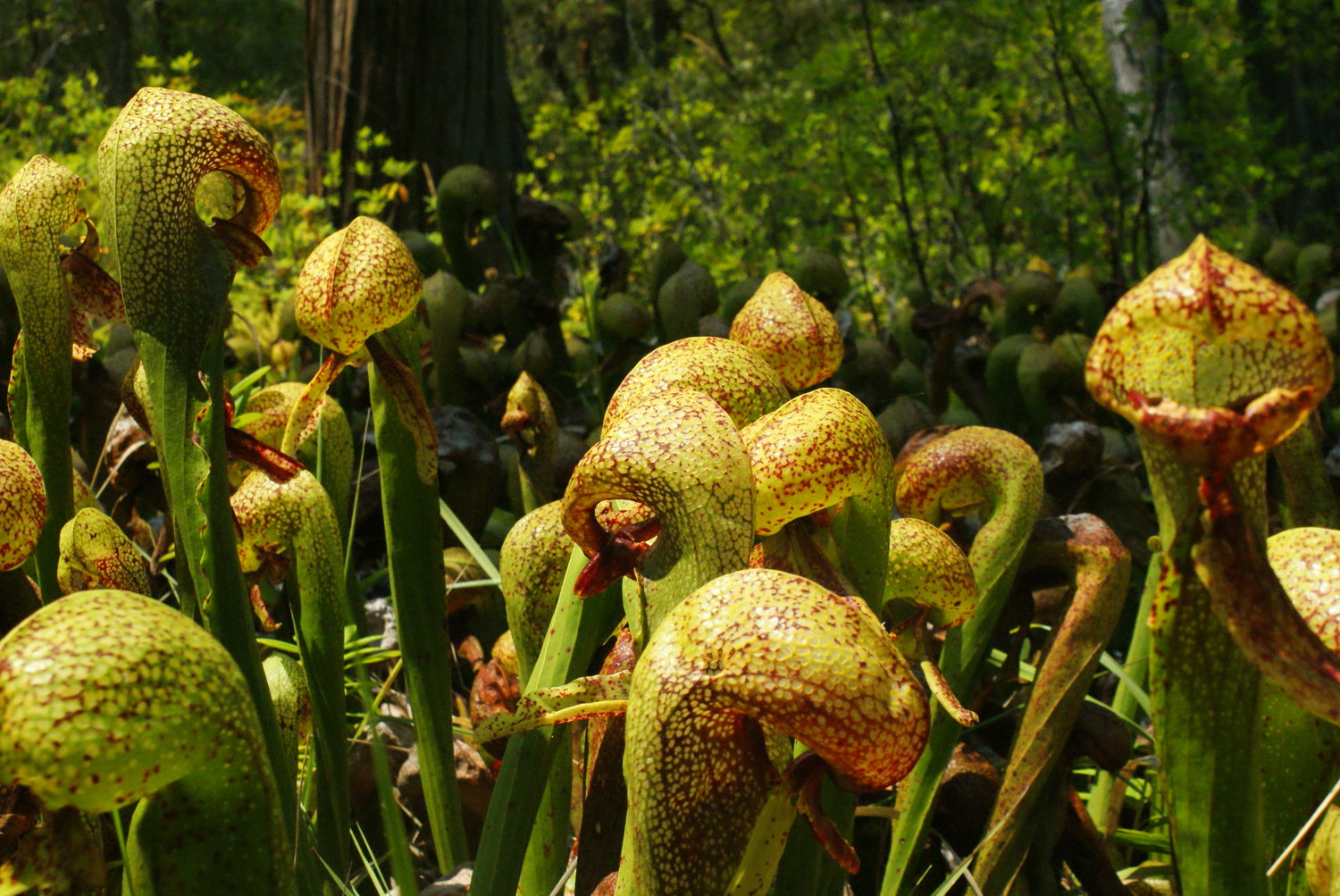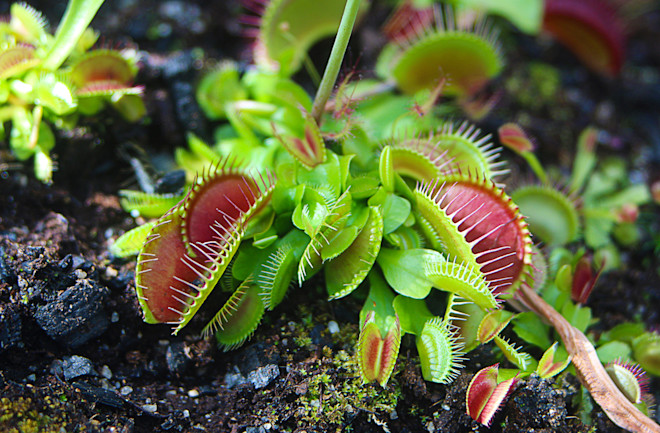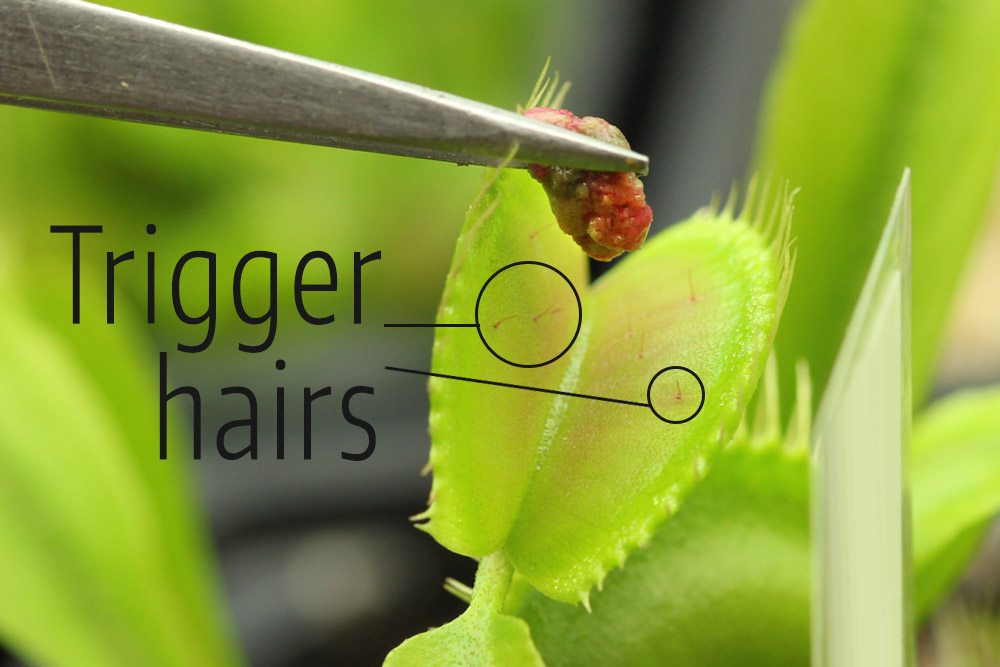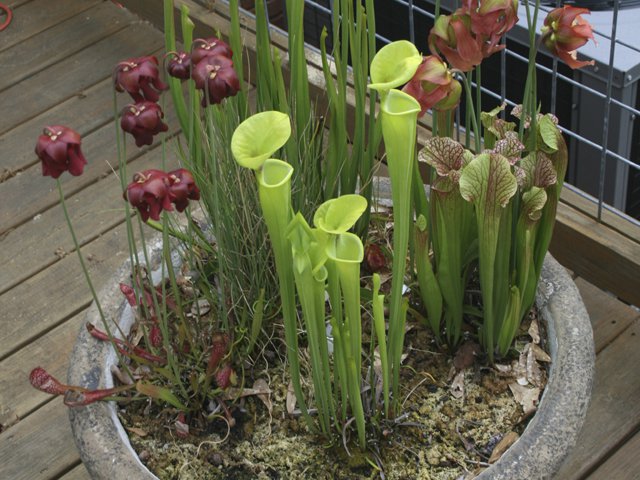Easy Carnivorous Plants Care Guide
There are more than a thousand different varieties of carnivorous plants. With the exception of Antarctica, these plants are indigenous to every continent. Other plants cannot compare to carnivorous plants because they catch insects and consume them.
These plants typically feed on pests that approach them in search of food while other plants receive food. Try a few of easyst carnivorous plants on this list if you want to grow some simple carnivorous plants.
- Cape Sundew (Drosera capensis)
- Butterwort (Pinguicula)
- Pitcher Plant (Nepenthes ventrata)
- South African Sundew (Drocena natalensis)
- Purple Pitcher Plant (Sarracenia purpurea)
- Venus flytrap (Dionaea muscipula)
- Lobster-pot plants (Darlingtonia californica)
The 5 Easiest Pitcher Plants to Grow
Cape Sundew (Drosera capensis)
Another species of carnivorous plant that can be grown indoors is the cape sundew. Insects can be caught by wrapping themselves in the plant’s sticky leaves.
This is a relatively small plant that blooms with violets in the summer. Therefore, despite its attractive appearance, it is still a carnivorous plant, so use caution.
Cape sundew reproduces without issue and grows quickly. As a result, you will be able to grow multiple plants from a single one.
Once they have had six hours of early morning sunlight, you should take them out of the bright sunlight because they enjoy being in it.
- Common name: Cape Sundew
- Scientific name: Drosera Capensis
- Family: Droseraceae
- Max height: 10 inches
- Soil: sandy peat moss soil mix
- Lighting: Partial to full sunlight
- Growth rate: Fast, grows mature within less than a year
- Fertilization: Goldfish flakes can be used
- Temperature: 60-75 degrees Fahrenheit (16-24 degrees Celsius)
- Hardiness Zones: zone 6
Butterwort (Pinguicula)
Another small carnivorous plant, butterwort traps insects on its damp, yellowish-green leaves before eating them.
Purple and white flowers are also produced by it. Although it is well known that butterwort grows most effectively in partial sunlight, giving it six hours of direct sunlight will accelerate its growth.
Allowing Butterwort to dry out in a dark area will prevent it from catching prey once it enters its dormant phase.
- Common name: Butterwort
- Scientific name: Pinguicula
- Family: Lentibulariaceae
- Max height: 1.1 to 6.3 inches (3–16 cm)
- Soil: one part clean, sharp sand to three parts peat moss (moist to wet soil)
- Lighting: sun to partial shade
- Growth rate: normal
- Fertilization: does not need fertilizer. But to boost growth, basic plant fertilizer can be used
- Temperature: 77 to 95 degrees Fahrenheit (25 to 35 degrees Celsius)
- Hardiness Zones: USDA zones 10 and 11
Pitcher Plant (Nepenthes ventrata)
Another intriguing species of carnivorous plants is the tropical pitcher plant. These plants trap insects after luring them in with their sticky sap.
These plants can trap small worms, lizards, and even spiders, making them much deadlier than other carnivorous plants.
So you must take extra care if you want to grow them. Tropical Pitcher Plants typically grow in nitrogen-deficient soil, and like many other carnivorous plants, they use the digestion of insects to make up for this nutrient deficiency.
When grown outdoors, this plant will also catch falling leaves and consume them, which will help it gain nitrogen.
So, to be on the safe side, you should test your soil’s nitrogen levels first if you want your tropical pitcher plants to grow healthily.
- Common name: monkey cups or Tropical Pitcher Plants
- Scientific name: Nepenthes
- Family: Nepenthaceae; Dumort.
- Max height: 45 feet (13.7 meters)
- Soil: half perlite and half-dry sphagnum moss
- Lighting: bright light without much direct sun
- Growth rate: moderate
- Fertilization: generally not required
- Temperature: 75 to 83 degrees Fahrenheit (23.9 to 28.3 degrees Celsius)
- Hardiness Zones: Zones 6–9
South African Sundew (Drocena natalensis)
Compared to the other plants on this list, the South African sundew is unique. It doesn’t need much in the way of heat, humidity, or light. It also has a very distinctive appearance, resembling a green starfish with spikes of white and pink.
It doesn’t need a humid environment when grown in a tray; two inches of distilled or purified water will do the trick. Temperature variations between 40 and 90 degrees are acceptable. It even thrives outside if you live in an area without frost.
- Common name: spoon leaf sundew, oblong-leaved sundew, or spatulate leaved sundew
- Scientific name: Drocena natalensis
- Family: Droseraceae
- Max height: two to eight inches tall (five to twenty centimeters)
- Soil: 1 by one ratio mix of peat moss and sand/perlite
- Lighting: Full to partial sun; provide it with six hours of direct sunlight as well
- Growth rate: will grow to maturity within a year
- Fertilization: does not need fertilizer, or you can dilute the fertilizer and use it
- Temperature: 60 to 85 degrees Fahrenheit (15.5 to 29.4 degrees Celsius)
- Hardiness Zones: Zone 10
Purple Pitcher Plant (Sarracenia purpurea)
It would be easy for someone to mistake the stunning carnivorous Purple Pitcher Plant for some pretty flowers.
In fact, Newfoundland and Labrador, two Canadian provinces, have adopted this plant as their floral emblem.
This plant is known to be very simple to grow and can survive in low temperatures. It captures prey in a very unique manner.
By drawing insects to its bright colors and fragrant opening, it deceives the insects.
Some insects lose their balance when they are near and fall into the pitcher, where the plant consumes them to obtain nutrients.
Do not be concerned if you think your plant has stopped growing; the Purple Pitcher Plant experiences dormant periods similar to other plants that can grow in cold temperatures.
- Common name: side-saddle flower, northern pitcher plant, turtle socks, or the purple pitcher plant
- Scientific name: Sarracenia purpurea
- Family: Sarraceniaceae
- Max height: 1 to 2 feet
- Soil: half perlite and half-dry sphagnum moss
- Lighting: full sun to light shade
- Growth rate: Slowly
- Fertilization: Do not need fertilization
- Temperature: 60 degrees to 70 degrees Fahrenheit (15.6 to 21 degrees Celsius)
- Hardiness Zones: 3 – 9
Venus flytrap (Dionaea muscipula)
The most well-known and well-liked carnivorous plant is this one. The powerful “jaws” of venus flytraps catch flies and other insects when they touch the hair in the pink center, where the trap is located.
This plant gains from consuming insects because the insects’ digested remains provide nitrogen and other nutrients to the plant.
Because the soil where the Venus flytrap grows is deficient in nutrients, the plant feeds on insects, which can supply the nutrients it needs.
If you grow this plant at home and have kids around, keep them away from it and make sure they don’t touch it too often.
This is because if you touch it too frequently, the Venus Flytrap will stop functioning.
- Common name: Venus Flytrap
- Scientific name: Dionaea Muscipula
- Family: Droseraceae
- Max height: 6 to 12 inches tall by 6 to 9 inches wide
- Soil: standard soil mixture (1 part peat moss and 1 part perlite)
- Lighting: bright but indirect light
- Growth rate: grows 4 to 5 inches in two to four years
- Fertilization: Does not need fertilization.
- Temperature: 70 to 95 degrees Fahrenheit (21 to 35 degrees Celsius)
- Hardiness zones: 8-10
Lobster-pot plants (Darlingtonia californica)
This plant was given its name after lobster pot fishermen because it uses a trap that resembles a lobster pot to catch its prey.
Consequently, it is a really fascinating plant.
This plant prevents insects from escaping if they become trapped inside of it.
The plant’s tiny hairs cause the insects to descend into the plant, where they are broken down.
- Common name: cobra lily, cobra plant, or California pitcher plant
- Scientific name: Darlingtonia Californica
- Family: Sarraceniaceae
- Max height: 12 to 36 inches (30 to 90 cm)
- Soil: sphagnum moss to one part pumice or lava rock
- Lighting: strong light
- Growth rate: 3 to 4 inches after three years
- Fertilization: does not need fertilizers
- Temperature: 104 to 131 degrees Fahrenheit (40 to 55 degrees Celsius)
- Hardiness Zones: USDA Zone 7a
Carnivorous Plant Care Instructions
Although fascinating, carnivorous plants need a specific environment to survive. The specifics of how to take care of carnivorous plants are all covered in this article. It contains information on Cobra plants, Venus flytraps, Pitcher plants, Drosera, and more.
In humid, malnourished environments with lots of water, sunlight, and food sources, carnivorous plants thrive. Tropical carnivorous plants prefer a constant temperature year-round, while temperate carnivorous plants need a period of dormancy.
Here is a list of the most important carnivorous plant maintenance advice. To learn more about each item in detail, read the article’s remaining sections.
- Use distilled water, reverse osmosis water, or rainwater as pure water sources for carnivorous plants.
- Give plants that consume animals a lot of sunlight.
- Keep the soil moist at all times by watering frequently.
- Avoid overwatering. Root rot is a problem for carnivorous plants.
- Your plant could die if you use ordinary potting soil. Use only soil devoid of minerals and nutrients.
- Put carnivorous plants outside so they can catch insects or you can feed them!
- Never give human food to carnivorous plants!
- Environments that are humid are advantageous but not required.
- Carnivorous plants shouldn’t be fertilized.
- Your plant may perish in extreme temperatures. Avoid burning them and allowing them to freeze during the winter.
- A period of dormancy is necessary for some carnivorous plants.
- Trimming is not necessary. As they develop, leaf loss occurs in carnivorous plants. When dead leaves start to appear, you can trim them.
- Avert using metal, glass, terracotta, and unglazed ceramic containers.
- In a closed terrarium, avoid growing carnivorous plants.
- Stay away from motion and stress.
- Watch out for insects and fungus. The usual suspects can attack carnivorous plants!
The Best Carnivorous Plants to Choose
You must consider your surroundings before selecting a carnivorous plant. Dormancy is the first thing to take into account. Only if you are able to meet the dormancy requirement should you choose a temperate carnivorous plant. If not, only think about tropical plants. As long as you can grow tropical plants indoors and provide a humid, warm environment, you technically can grow them almost anywhere.
For growers of carnivorous plants, the following plants are recommended as starters:
-
Sarracenia
-
Drosera
-
Venus flytrap
Dormancy is necessary for the Sarracenia and Venus fly trap, and Drosera has different requirements. Regarding accessibility. Because they can be purchased commercially for a low price, venus flytraps are among the best starter plants.
Beginner’s Guide for Growers
Therefore, there are numerous genera of carnivorous plants that you can become interested in and passionate about. How to grow them is probably your biggest concern. We’ll give you just enough information here to keep your plant content while you read up on its specifications later.
In general, cultivating carnivorous plants is very easy; in fact, collections of these plants have been kept independently by children as young as ten. Do you believe you are smarter than a fifth grader?
The three main ideas are as follows:
- 50/50 peat & perlite soil
- full sun
- low-mineral water
I’m done now! Under those circumstances, you can grow about 75% of all carnivorous plants. Let’s elaborate on those points:
Soil
Only the fundamental components of garden soil—peat and perlite—are meant by these terms. These two items are less expensive than nutrient-rich mixes and are conveniently available in garden centers. The fact that the soil lacks any nutrients or minerals is crucial.
Because they obtain their nutrients from prey rather than their growing medium, carnivorous plants are just that—carnivorous.
For your plant, look for unenriched sphagnum peat moss (a yucca wetting agent is acceptable) and perlite, and combine at a ratio of about 50%.
Full Sun
Full sun typically denotes direct sunlight for more than six hours per day. This is typically the absolute minimum for carnivorous plants.
For example, the Venus fly trap lives in the Carolinas’ swamplands that resemble savannas; in the middle of summer, an exposed plant can receive 8 to 9 hours of sunlight daily. The success of such a plant will be greater than that of one grown in the shade because photosynthesis provides energy to the plant.
A plant can produce more leaves during a growing season and store more energy in case it needs to go into dormancy if it photosynthesizes more.
The same rule for sunlight applies to all species of Sarracenia (North American pitcher plants), Drosera (sundews), numerous Pinguicula (butterwort) species, and many others. There are, however, a few exceptions! In some locations, “full sun” (6+ hours per day) may feel hotter and drier than it would elsewhere.
Your native plants from North America may grow at a different rate than plants grown in more Northern latitudes if you live in an arid region like much of Arizona or Southern California. Their leaves may also burn in extremely hot weather.
Water
In moist soil, the majority of novice carnivorous plants will flourish. A straightforward rule to remember is that soil moisture levels correspond to plant moisture levels. Your plant is dying if your soil is dry.
The saucer should be filled to within 1/8 or 1/4 of the pot’s height if you decide to keep your plant on the tray system. This guarantees that you will have some time before the subsequent watering and that your plant will be content during that time.
Consider your water tray to be like a gas tank: as long as the tank is full, everything is fine, but once it runs out, you only have 30 miles (or roughly a day) before things become critical. When your water tray runs out, it’s time to replenish it.
Additionally, water quality is crucial. When growing carnivorous plants, it’s important to ensure that the water has a low dissolved solids content, or how mineral-rich your water is. Salts of substances like potassium, sodium, and magnesium, as well as other more complex compounds, are examples of minerals.
Since most habitats of carnivorous plants do not naturally contain dissolved solids, their roots typically lack the necessary adaptations to deal with them and will burn if exposed to excessive amounts.
Almost any carnivorous plant can be grown in tap water as long as the dissolved solids content is under 50 ppm. Over that, you might need to use distilled water, rainwater, or water that has been filtered through a reverse osmosis (RO) system. These choices are secure for your plants and free of dissolved solids.
Food
How about the food? Until you’re certain you can grow your plant for a long enough period of time to make a difference, wait to feed it. Food should rank last on the list of necessities if the conditions of soil, light, and water that allow carnivorous plants to grow healthily are not present.
The production of flowers, which helps some species survive their flowering cycles, is what food is really important for. The majority of carnivorous plants do, in fact, need a “blood meal” to develop from their juvenile to adult forms. But in the short term, consider eating less and drinking more.
Having said that, we typically start our hobbies by feeding carnivorous plants. Nothing is more fascinating or satisfying than watching a Venus flytrap catch a fly on its own, marveling at the way sundews encircle their prey, or giggling uncontrollably as ants pour into your pitcher plants.
Feed them small prey; your plant will benefit greatly from flies, moths, and other weak flying insects. When in doubt, watch what it naturally captures and then imitate it with your own gruesome insect buffet.
Common Errors
After working out the fundamentals, a beginner might get confused by a few points regarding growth cycles, sunlight, temperature, and humidity.
Does your plant that consumes meat require winter dormancy?
You need to be aware of whether the plant you have needs to hibernate over the winter. When a plant hibernates for the winter, it stops growing. This group includes temperate bladderworts, temperate butterworts, temperate sundews, and venus flytraps.
Dormancy is a natural occurrence for these plants, just like a person’s sleep cycle. It is not optional. Many people are unaware that their fly trap was actually going dormant when it died around Thanksgiving time, not because they weren’t taking proper care of it.
The majority of temperate carnivorous plants need at least two and a half months of rest during which the weather changes from sunny and hot to gloomy and cold.
They will still need water and can endure up to two weeks of being submerged in ice, but they will stop growing and go dormant until spring, when heat and light will reactivate their growth cycle. The leaves of numerous species will fall.
Conclusion
The aim of all carnivorous plants is to consume nearby insects. Their main objective is to provide for their own survival.
They only eat insects to compensate for the nutrients they can’t get from the soil.
Carnivorous plants go through photosynthesis just like other plants do.
Make sure to conduct thorough research on carnivorous plants and the best soil to grow them in if you want to grow them.
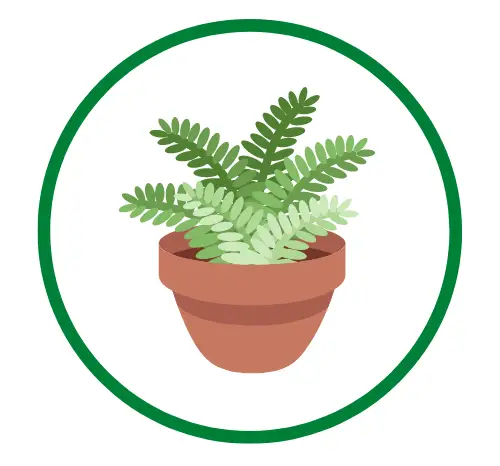
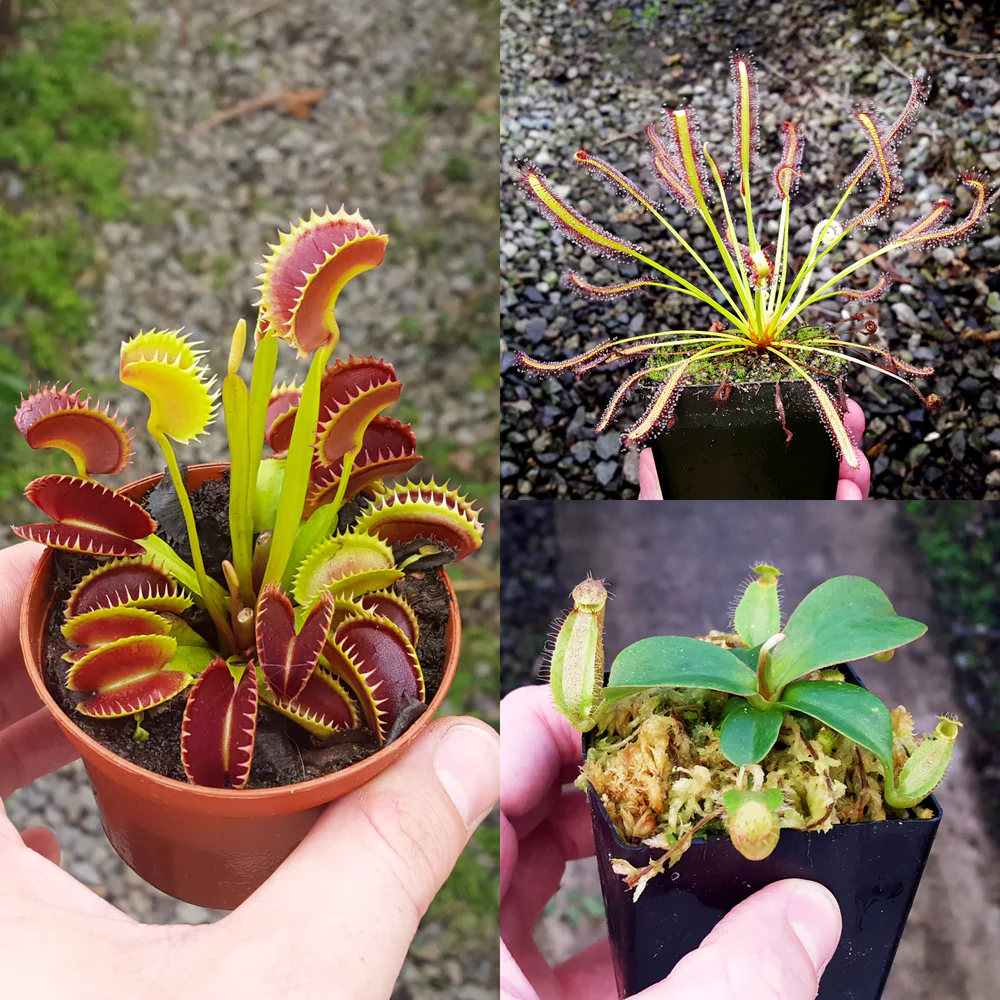
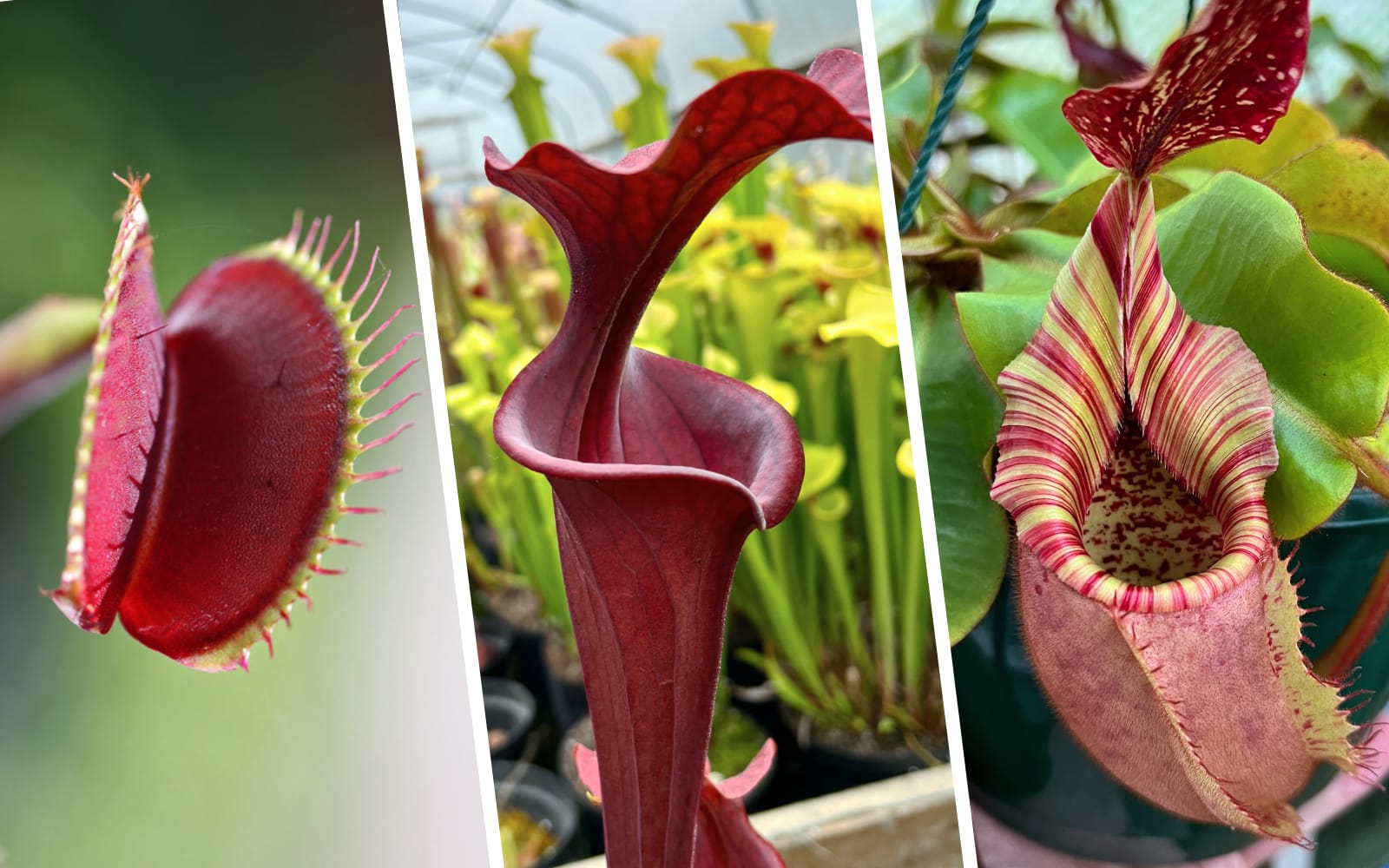

 Another small carnivorous plant, butterwort traps insects on its damp, yellowish-green leaves before eating them.
Another small carnivorous plant, butterwort traps insects on its damp, yellowish-green leaves before eating them.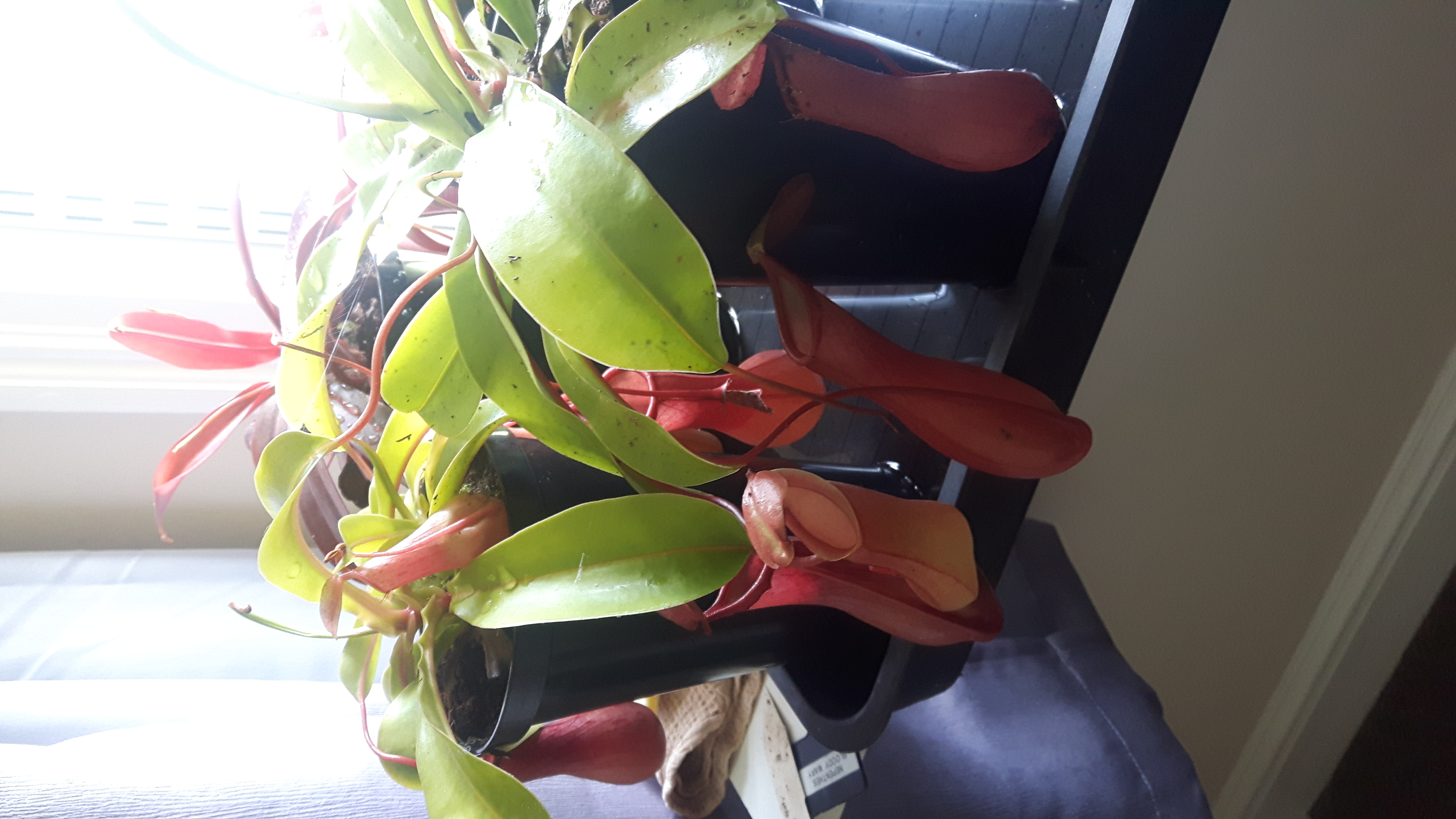
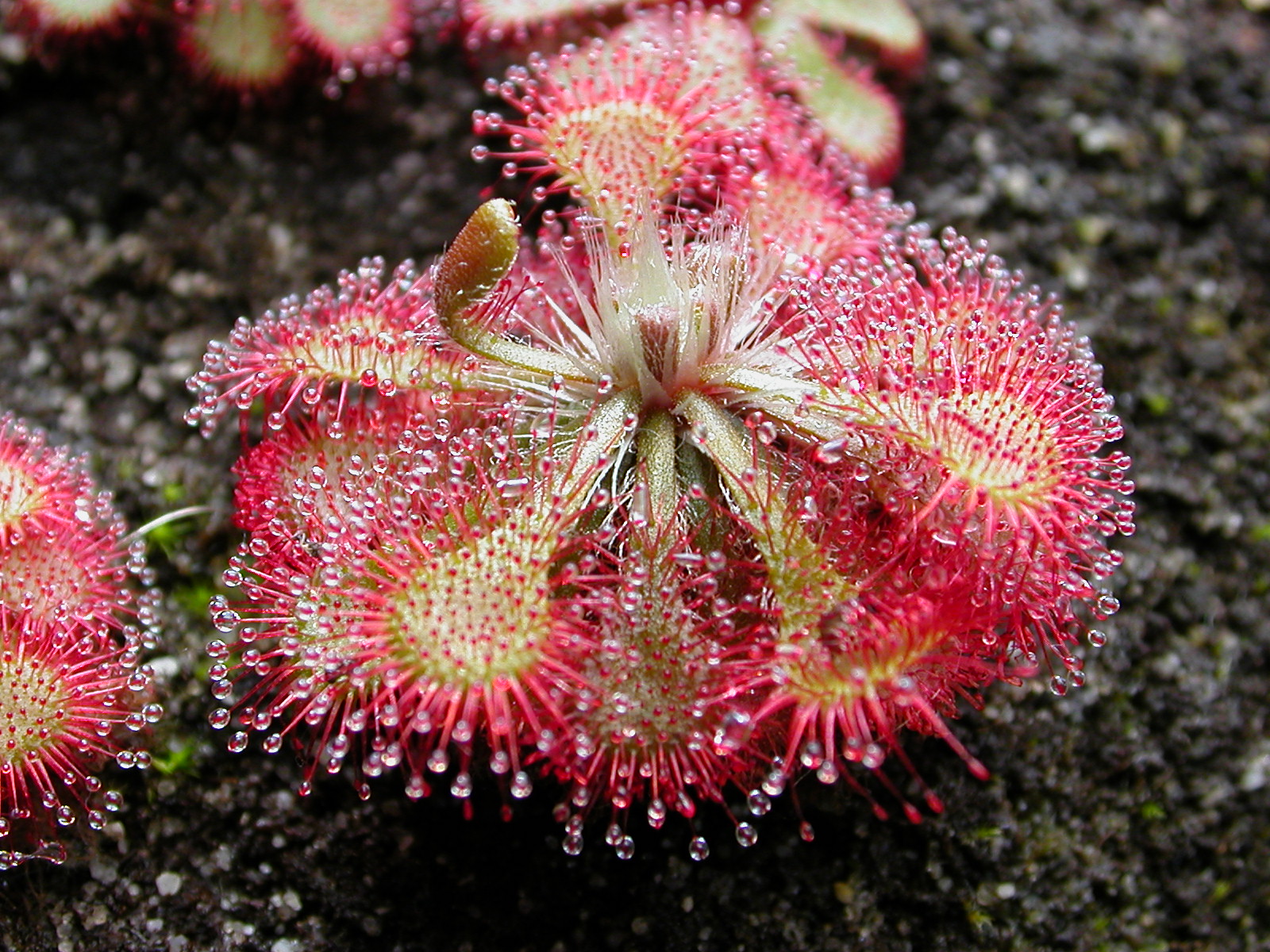 Compared to the other plants on this list, the South African sundew is unique. It doesn’t need much in the way of heat, humidity, or light. It also has a very distinctive appearance, resembling a green starfish with spikes of white and pink.
Compared to the other plants on this list, the South African sundew is unique. It doesn’t need much in the way of heat, humidity, or light. It also has a very distinctive appearance, resembling a green starfish with spikes of white and pink.